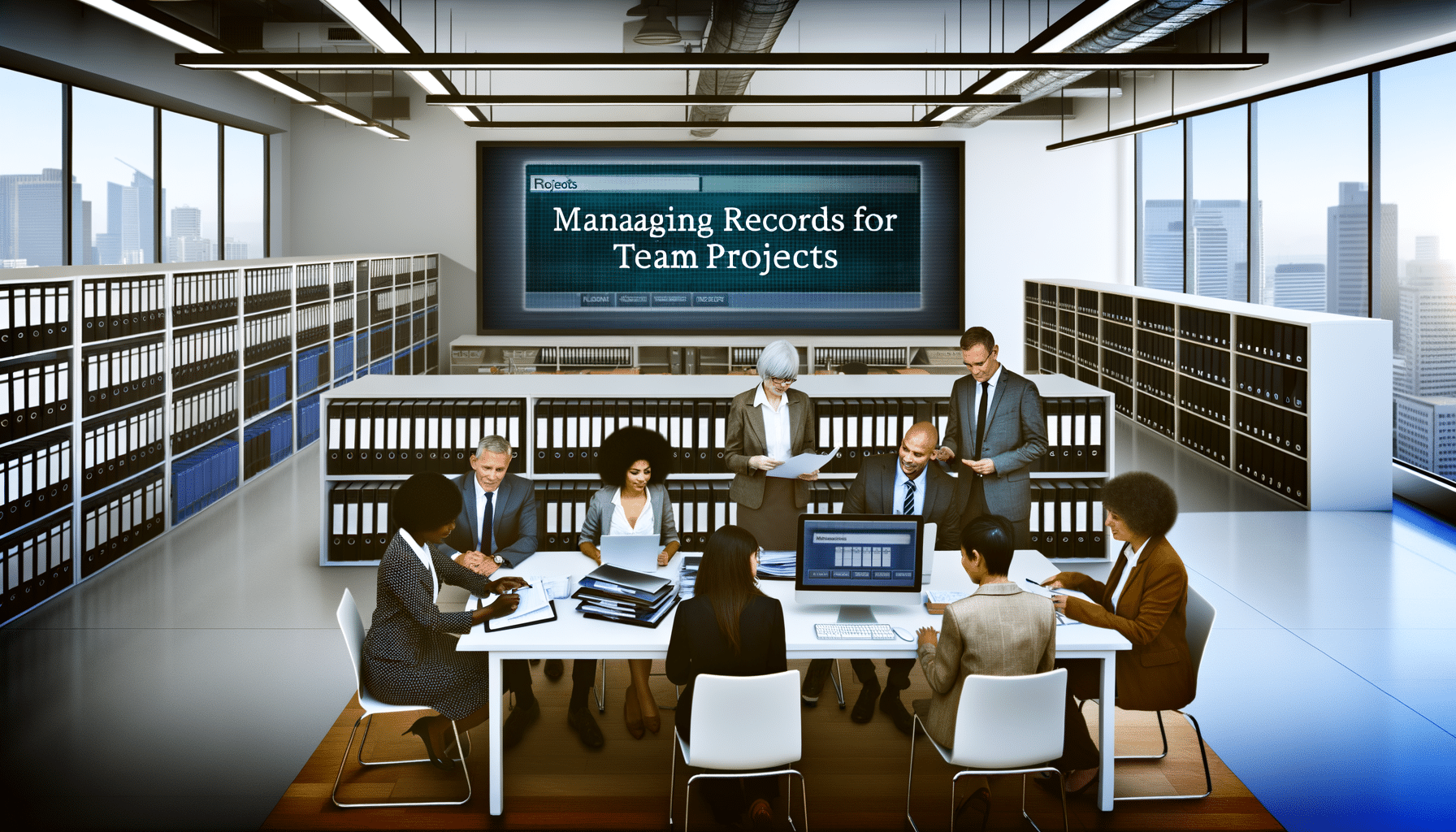- Project Management
- December 2, 2024
Organizing Project Documentation Mid-Project

When managing a project, whether it be developing software, rolling out a new marketing strategy, or constructing a skyscraper, project documentation is the backbone of its success. Mid-project, however, the challenge of maintaining organized project records can become daunting. As a founder concerned with taking record management to the next level, I’ve witnessed firsthand how strategic documentation management can significantly enhance project outcomes.
The Challenges of Mid-Project Record Organization
In the whirlwind of tasks, deadlines, and team collaborations, project managers often find themselves amidst a chaos of documents. The midway point of a project is notoriously unpredictable. As scope increases, changes occur, and decisions need quick validation, the order in project records might find itself compromised. It’s at this stage where the importance of organization in your records cannot be overstated.
Why You Must Care About Mid-Project Document Organization
Keeping project records organized is critical for multiple reasons:
- Efficient Decision Making: Accurate, up-to-date records facilitate swift, informed decision-making.
- Team Alignment: Organized documents ensure all stakeholders have access to the latest information.
- Risk Management: With proper records, potential risks and issues are easier to identify and mitigate.
- Compliance Maintenance: Legally binding decisions and compliance standards require clear and accessible records.
Implementing Effective Documentation Strategies
To tackle the chaos, consider these strategies for organizing project records mid-flight:
1. Conduct a Mid-Project Documentation Audit
Start with a comprehensive audit of existing documents. Evaluate which documents are relevant, which need updating, and which can be archived. This process aids in purging unnecessary information and setting a fresh baseline of relevant data.
2. Utilize AI-Driven Tools
Consider using AI-driven platforms, like RecordsKeeper.AI, to simplify and streamline record management. These tools automatically categorize and tag records, making retrieval through natural language queries intuitive and efficient.
3. Establish a Nominal Structure
Deploying a standard structure across all documents aids in maintaining consistency. Formats for naming, version control, and filing should be the same across departments. This eliminates confusion and ensures every team member can locate records swiftly.
4. Foster Collaboration and Accessibility
Utilize secure data rooms to share project records with team members. Controlled access and real-time activity tracking not only improve collaboration but also enhance record security and accountability.
5. Leverage Cloud Solutions for Backup
Ensure regular automated backups to protect against data loss. Having quick recovery options alleviates the stress of accidental deletions or corrupt files – common mid-project mishaps.
Ensuring Long-Term Organization in Project Management
While solving mid-project documentation issues is critical, you should also set your sights on the future. Establish a culture that values proper documentation to avoid reencountering organizational chaos in later projects.
Automate Compliance Management
Integrate compliance management systems to automate regulatory workflows. This not only ensures adherence to standards like GDPR and HIPAA but also reduces the burden on team members tasked with maintaining compliance through organized project records.
Maintain Audit-Ready Records
Enforcing audit logs and generating audit-ready reports guarantee continual readiness for internal or external evaluations. It also cultivates an environment of transparency and accountability.
Conclusion: A Strategic Advantage in Project Execution
Embarking on the journey of organizing project records mid-project may seem formidable. Yet, it presents an opportunity to transform record management from a tedious duty to a strategic advantage. As you harness technology and structured approaches, you save time, reduce stress, and empower your project team to focus on delivering tangible results.
Remember, efficient project documentation is not just about storing information – it’s about fostering an environment of informed decisions, enhanced collaboration, and strategic foresight. This is the vision I hold with RecordsKeeper.AI, and I invite you to embark on your journey towards a meticulous project record organization. I’m here to help you streamline your processes, stay compliant, and ultimately succeed in your project undertakings.
Toshendra Sharma is the visionary founder and CEO of RecordsKeeper.AI, spearheading the fusion of AI and blockchain to redefine enterprise record management. With a groundbreaking approach to solving complex business challenges, Toshendra combines deep expertise in blockchain and artificial intelligence with an acute understanding of enterprise compliance and security needs.
Related Posts

Managing Records for Team Projects
Organizing documentation for collaborative work.
- January 15, 2025

Setting Up Temporary Project Archives
Creating efficient temporary storage for project files.
- December 18, 2024
Archives
- January 2025
- December 2024
- November 2024
- October 2024
- September 2024
- August 2024
- July 2024
- June 2024
- May 2024
- April 2024
- March 2024
- February 2024
- January 2024
- December 2023
- November 2023
- October 2023
- September 2023
- August 2023
- July 2023
- June 2023
- May 2023
- April 2023
- March 2023
- February 2023
- January 2023
- December 2022
- November 2022
- October 2022
- September 2022
Want to get more content like this?
Signup to directly get this type of content to your inbox!!
Latest Post
Document Control for Equipment Maintenance
- January 20, 2025
Managing Records for Multiple Clients
- January 19, 2025
Handling Conference Documentation
- January 18, 2025
Setting Up Department Record Reviews
- January 17, 2025





